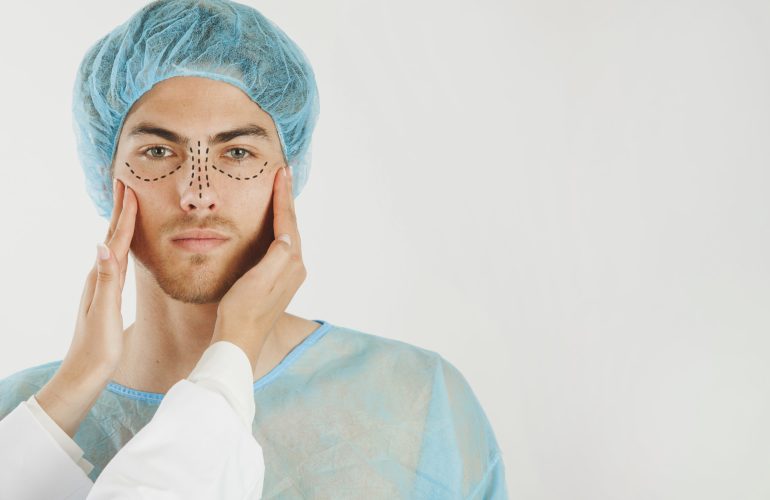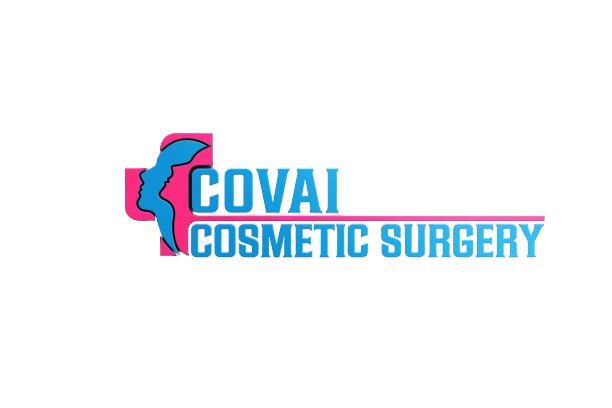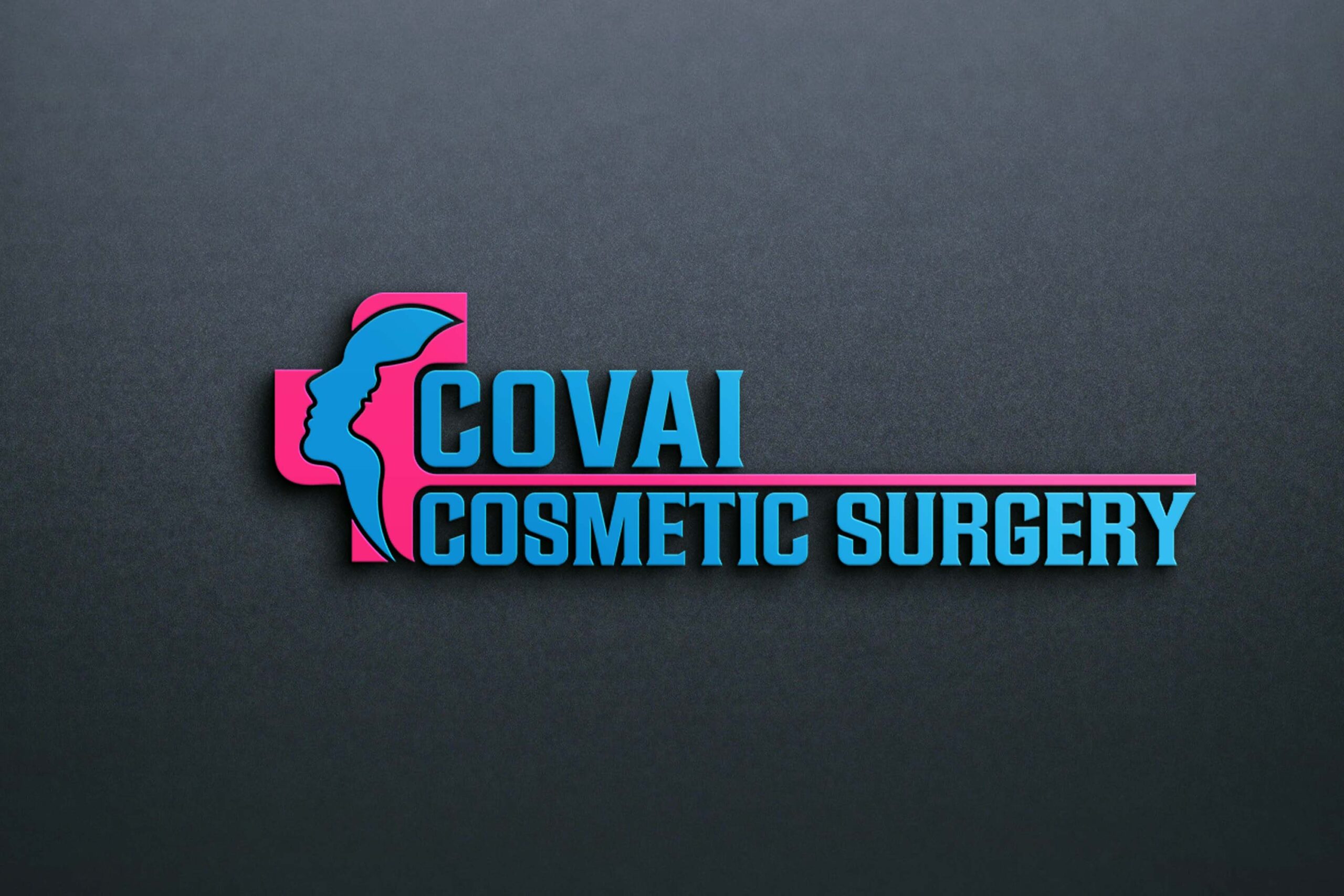Chest Lift
- Home
- Chest Lift

Chest Lift in Coimbatore
The chest uplift is a rejuvenation of the chests which addresses saggy, droopy chests, stretched out nipples and areola, decreased chest volume with aging. If a woman desires chest augmentation or chest reduction then it can be combined with the chest uplift procedure to restore youthful looking chests. The chest uplift is one of the most common procedures done worldwide to correct the saggy and droopy chests. Thousands of women across the world get chest uplift surgeries done without any major risk and are happy about the results that they achieve.
Chest uplift: When to Consider?
When chestfeeding, pregnancy, pull of gravity, excessive weight gain or weight loss, normal aging, or heredity has affected the shape of your chests, resulting in sagging and drooping.
If you are considering chest implants and your surgeon thinks that the lift you desire cannot be obtained with the implants alone.
Stretched out areola and nipples, downward pointed nipples.
Our Service
- Face Surgeries
- Body & Chest
- Hair Treatment
- Laser Treatment
- Anti Aging
- Aesthetics


Considerations
Pros
- You start looking better in the clothes or out of it too.
- Scars will be there which take time to fade away.
- Youthful appearance of the chests.
- Self-confidence is enhanced when you look better in and out of clothes.
Cons
- Gravity and age will continue to affect as usual and sagging does occur again with time.
- Scars will be there which take time to fade away.
- A subsequent pregnancy may affect the result to some extent.
However, there are unique considerations for every patient. Your Plastic Surgeon is the best person to assess your suitability for the procedure.
Am I a good candidate? I can’t decide.
For a woman who has become increasingly conscious about her sagging chests, a consultation with your plastic surgeon will help to make things clear about your suitability. Many a times one may also need an augmentation or chest reduction in addition to the chest uplift. The chests have to be pleasing at the end of the procedure. Both augmentation and reduction incorporate a chest uplift so don’t be surprised if your Plastic Surgeon would suggest one of these also with the chest uplift.
You may want to consider a chest uplift if:
- Your chests have good volume but are pendulous.
- Lacking firmness.
- Nipples below the chest crease.
- Different appearing chests.
- Unequal chests.
- Small chests (you may need augmentation too).
- chests that are large will most definitely need a reduction if one is looking for a long lasting result, otherwise, the heavy chests will pull down the chests again.
- Whoever has realistic expectations, positive frame of mind and good general health is most likely a good candidate.
So, what are my options for the techniques?
A description of the various techniques that may be employed:
- For women with a severe degree of sagging who cannot be helped with other methods sufficiently an “anchor” method is chosen. In this, the scar will run from the perimeter of the areola, vertically downwards and the chest crease under the chests. This leads to most scarring but holds the chest most tightly and is long lasting.
- Moderate sagging, unsuitable for peri-areolar lift and women who do not want implants will benefit the lost from a “lollipop lift’. In this, the scar runs peri-areolar and vertically downwards.
- The “donut” lift has scars only around the areola and is used for mild sagging. In conjunction with chest implants, it can be used for more pronounced sagging.
- The degree of lift with other techniques like crescent lift takes care of only moderate sagging and lifts only to a minor degree. An areolar scar runs just around half areola.
- All chest uplifts will come with a scar, no matter how small. All the methods that are touted as scarless are not really scarless. If one is increasing the volume only to get perky chests, they are often offered treatments like thread lifts, thermage, only liposuction but these methods offer limited results and are not long lasting. However, with strict patient selection for the suitability of the method, one may expect results in accordance with the method selected.
Procedure
A chest lift is a procedure which is most commonly performed in general anesthesia. There are many different techniques available. Your surgeon will choose a method that will suit your chest size and shape, areola position, the degree of chest sagging, extra skin present and the quality of skin present.
- Excess skin is removed and the envelope of the chest is tightened.
- The areola is reduced in size.
- The skin above the areola becomes the skin below it after the procedure.
- Stitches are put in the chest tissue to hold the chest together and support the envelope of skin that is around the chest.
- Scars are hidden under the chest. Very little amount of scar is visible on the chest.
- Ability to chestfeed is not affected in a chest lift.
- In a few patients, a scar on the chest longitudinally may be avoided but that will depend on the suitability of your chest to the peri-areolar mastopexy.
How do I select my surgeon?
Choosing a surgeon is one of the most important aspects of achieving the optimum result:
- Comfort level. Education and training and experience in chest cosmetic surgeries is very important when you choose a surgeon.
What can I expect on the day of my procedure?
Your chest uplift surgery may be performed in an accredited hospital, free-standing ambulatory facility or office-based surgical suite. Your surgeon will give you an estimate of how long your surgery will last based on the details of your surgical plan.
- Medications are administered for your comfort during the surgical procedure.
- General anesthesia is commonly used during your chest uplift procedure, although local anesthesia or intravenous sedation may be desirable in some instances.
- For your safety during the surgery, various monitors will be used to check your heart, blood pressure, pulse and the amount of oxygen circulating in your blood.
- Your surgeon will follow the surgical plan discussed with you before surgery.
- Once the operation has begun, the surgeon may decide to combine various techniques or change a technique to ensure the good result. It is important that you feel comfortable and trust your doctor to make these decisions.
- Following the surgery, a bulky gauze dressing (bandage) will be wrapped around your chests and chest or you might wear a surgical bra. Drainage tubes may be attached to your chests.
- You will be taken into a recovery area where you will continue to be closely monitored.
- Before leaving for home, you (or someone looking after you) should feel capable of emptying and resetting the drains.
You will probably be permitted to go home after a short observation period unless you and your plastic surgeon have made other plans for your immediate postoperative recovery.
Aftercare:
- Immediately after your chest uplift
- Bandage, compression garment, and drains are something you can expect. However, drains may not be placed in the majority.
- Some pain, redness, and swelling may be present.
- Some bruising, sensation changes, itching around incision sites may be experienced. To do away with the symptoms one may need about 8-12 weeks.
How long do the results last?
If a procedure has been performed in accordance with your chest size and shape then results are very very long lasting. Unless you gain or lose an excessive amount of weight, go through pregnancy and childbirth, the results are permanent. Your chests will never go back to the droopy condition and will sag and droop normally with time.
One should choose a surgeon based on comfort level and experience and not on cost alone. The cost will vary from surgeon to surgeon and will also be different for different geographical areas.
Limitations and Risks
Significant complications are uncommon.
However, the surgical risks that may be present are:
- Anesthetic complications.
- Collection of blood that may need drainage or aspiration.
- Infection
- Scarring
- Sensation changes.
One can minimize the risks by getting operated in an accredited facility by a trained Plastic Surgeon.

